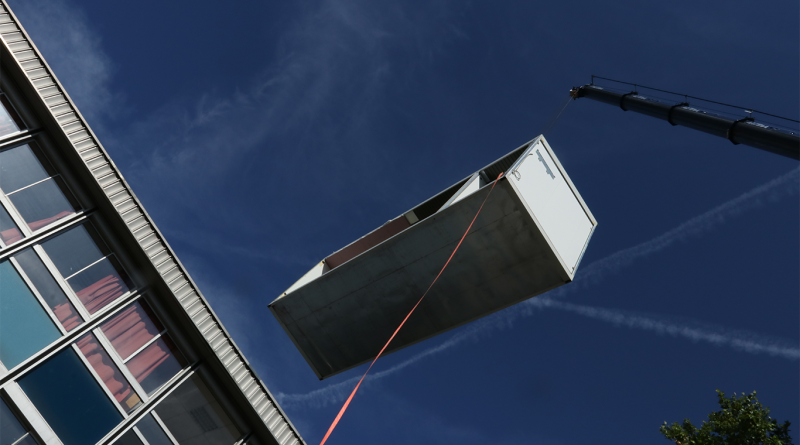The Promising Future of Modular Building
Modular construction is rapidly gaining traction in the building industry, promising to revolutionize how we think about constructing homes, offices, and public spaces. Unlike traditional construction methods, which build structures on-site, modular construction involves assembling pre-fabricated sections, or modules, in a factory setting before transporting them to the construction site. This approach not only speeds up the building process but also offers significant cost savings and environmental benefits. As we look to the future, modular construction stands poised to address some of the most pressing challenges in the construction industry, including sustainability, efficiency, and the need for affordable housing.
The Sustainability Edge
One of the most compelling advantages of modular construction is its potential to enhance sustainability within the building sector. Traditional construction methods are notorious for generating significant waste, both in terms of materials and energy consumption. In contrast, modular construction allows for more precise control over resources, minimizing waste and optimizing material usage. This efficiency is largely due to the factory-based nature of module production, which enables better inventory management and recycling of unused materials.
For instance, a study by the Waste and Resources Action Programme (WRAP) found that modular construction can reduce waste by up to 90% compared to traditional methods. Additionally, modular buildings are often designed with energy efficiency in mind, incorporating features such as improved insulation and energy-efficient windows. Projects like the Bullitt Center in Seattle, often cited as the greenest commercial building in the world, showcase how modular construction can lead to environmentally friendly outcomes without compromising on quality or aesthetics.
Speed and Efficiency in Modular Construction Translate to Major Industry Benefits
Speed and efficiency are other major selling points for modular construction. By manufacturing building components in a controlled factory environment, projects can proceed without the delays typically caused by adverse weather conditions or logistical challenges on-site. This streamlined approach significantly reduces construction time, allowing developers to complete projects faster and more reliably.
Cost savings are another critical advantage. The reduced construction timeline translates to lower labor costs and less financial uncertainty. For example, a report by the Modular Building Institute highlighted a hospital project that achieved a 50% reduction in construction time compared to traditional methods, resulting in substantial cost savings. These efficiencies make modular construction an attractive option for developers looking to maximize their return on investment while delivering high-quality buildings.
Integrating Advanced Technologies Enhances Modular Construction Capabilities
The future of modular construction is closely tied to advancements in technology. Building Information Modeling (BIM) plays a pivotal role in the design and execution of modular projects. BIM allows for detailed 3D modeling and simulation of building components, ensuring that every module fits together perfectly before it even leaves the factory. This precision reduces the likelihood of errors and rework, further enhancing efficiency.
Automation and robotics are also making their mark on the modular construction landscape. Automated production lines can fabricate modules with incredible accuracy, reducing labor costs and increasing production speed. As technology continues to evolve, we can expect to see even greater integration of digital tools and automated processes, driving further improvements in quality and efficiency.
Modern Modular Construction Offers Increased Design and Aesthetic Flexibility
Contrary to the misconception that modular buildings lack design flexibility, recent advancements have significantly expanded the architectural possibilities of modular construction. Modern modular buildings can be customized to meet a wide range of aesthetic and functional requirements, from sleek, contemporary designs to more traditional styles. This flexibility makes modular construction suitable for various applications, including residential, commercial, and institutional projects.
Innovative projects like the Phipps Houses in New York City demonstrate how modular construction can deliver high-quality, visually appealing buildings that blend seamlessly with their surroundings. These developments highlight the potential for modular construction to meet diverse design needs without compromising on performance or sustainability.
Market Growth and Future Prospects for Modular Construction
The modular construction market is experiencing significant growth, driven by increasing demand for affordable housing and sustainable building solutions. According to a report by Grand View Research, the global modular construction market is expected to reach $130 billion by 2025, growing at a compound annual growth rate (CAGR) of 6.5%. This growth is fueled by the need for efficient, cost-effective construction methods that can meet the challenges of urbanization and environmental sustainability.
However, the industry also faces challenges, including regulatory hurdles and a need for greater public awareness and acceptance. Addressing these challenges will be crucial for the continued expansion of modular construction. As the industry evolves, ongoing innovation and collaboration between stakeholders will be essential to unlocking the full potential of modular construction and shaping the future of the built environment.
Sources:
